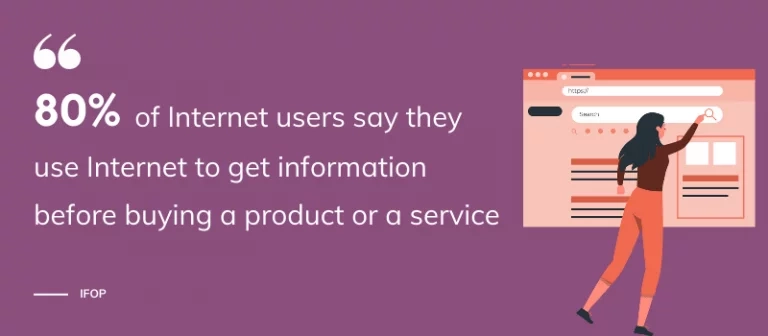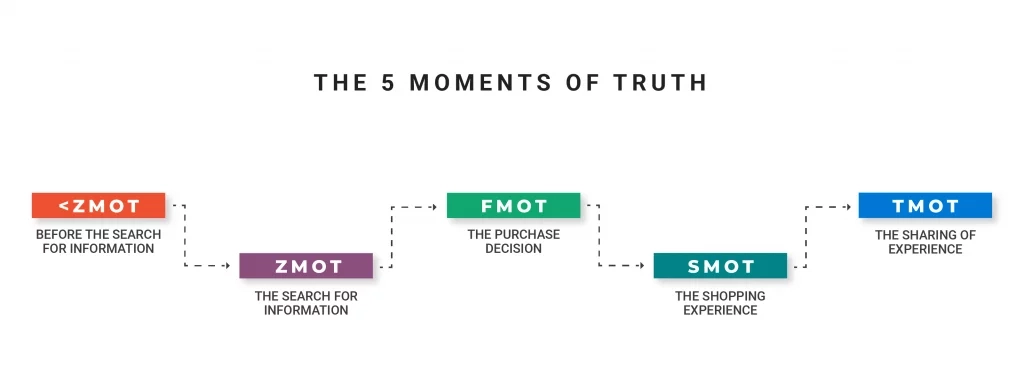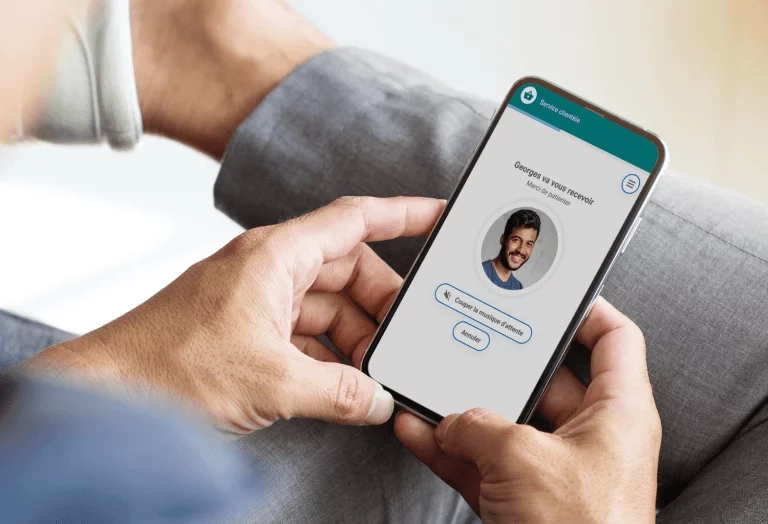The 5 moments of truth in customer relations



Providing an optimal and satisfying customer experience is essential for brands today. To achieve this, they must not only provide quality products and services, but also create an optimized and fluid customer journey. Indeed, a satisfied customer is much more likely to renew his purchase and to talk about it around him. The customer journey is a series of decisions. Each decision taken by a customer corresponds to a moment of truth. Determining these different moments allows developing effective improvement strategies. Moreover, the implementation of real-time video communication at several points along the journey can help companies deliver an innovative customer experience.
The notion of “moment of truth” (MOT) is generally used in a marketing and sales context. It refers to one or more key moments during which a consumer can form an impression of the brand and its products. This impression can be positive or negative, and therefore play an important role in the perception of a brand.
The company must be particularly attentive to the different moments of truth because it is there that the customer forms an opinion that will influence future decisions. They represent moments where a consumer can be won over and become a customer or conversely be lost, depending on the response provided by the brand. This concept is therefore very useful for understanding the overall customer experience and verifying that the experience is in line with or even exceeds expectations.
The challenge of this concept is twofold. First, it is to avoid dissuading the consumer and sending him to the competition. Secondly, it is to succeed in convincing them and creating an attachment to the brand in order to build loyalty.
In 2005, Procter & Gamble Chairman and CEO Alan George Lafley coined the concept of “moment of truth”. Initially, only two moments were defined: when a customer buys a product and when he or she uses it. The company’s objective was to satisfy its customers at these two levels as a priority in order to build loyalty. Since then, the concept has evolved, and other moments have been integrated to adapt to today’s customer journey. There are five moments of truth:
The less than zero moment of truth has recently appeared and refers to the moment when consumers do not yet feel the need to buy a product or service. The company can then carry out marketing actions (emailing, sponsored content, etc.) even before the customers come to it to position itself in their minds. This can decrease the likelihood of consumers choosing a competitor.
The zero moment of truth, coined by Google in 2011, is when a need arises in the mind of the consumer. When this happens, the consumer will seek information online to find the perfect solution. A study conducted by IFOP shows that 80% of Internet users say they use the Internet to get information before buying a product or a service. The sources of information are varied (brand websites, price comparison sites, social networks, consumer opinions, etc.) and allow consumers to form an initial opinion.

This moment of truth occurs well before the consumer contacts the brand or buys a product. This is why it is essential to take care of your e-reputation and to provide all the necessary elements to convince consumers.
The first moment of truth is when a consumer encounters a brand’s product or service for the first time. A few seconds are enough for the consumer to form a first opinion on the product and the brand. It is therefore important to deliver the right information and in particular how the product can meet the customer’s needs. It is during this period that the brand has the ability to turn a user into a buyer.
The second moment of truth is the buying experience. This stage is composed of several moments of truth:
The second moment of truth allows customers to see if the product or service lives up to their expectations. This stage is crucial for a company because it brings together three key elements of customer loyalty: the quality of the experience, the quality of the customer relationship and the quality of the customer service. In conclusion, the second moment of truth, as experienced, will decide whether or not customers will renew their purchases or remain subscribed to a service or cancel it.
The third moment of truth, also called the ultimate moment of truth, is when customers share their opinions about the product or service. They share their experiences in a positive or negative way based on the product’s ability to meet their needs, as well as the company’s efforts to provide an enjoyable experience throughout the buying process. If their opinions are positive and shared (via recommendations, comments, ratings, word-of-mouth, etc.), customers will contribute to the recruitment of new customers as well as to the company’s e-reputation.

During the customer journey, there can be many interactions between a customer and a brand. These interactions take place at different times (before, during or after the purchase) and usually involve multiple expertise (sales, customer service, technical support, etc.). If the brand provides the customer with a personalized and satisfying experience at each interaction, then customer engagement and loyalty will be enhanced. Integrating real-time video at certain points in the customer journey is a good way to enrich the customer experience.
Recently, many brands have implemented video calling directly on their website via different entry points. This allows them to better respond to customers’ expectations and to develop a rich omnichannel experience. It’s easy to use, as it only takes a few clicks for the customer to reach a brand’s advisor via video call.
This tool can be used in all types of business sectors and in many cases: one-to-one video calls, remote personal shopping, access to an advisor at a physical point of sale, remote quotes, etc.
Video has several advantages, including the ability to humanize the digital customer relationship. The 4th Samsung Smart Retail barometer highlights that digital does not reduce the role of the customer advisor, quite the contrary. Thanks to real-time video, brands can create a link with their customers from a distance.

Humans remember an event according to the emotion they felt at the time and at the end of the event. These two moments will determine the appreciation of the experience. Thus, when a customer encounters a problem with his product and calls the brand’s customer service, he generally feels a negative emotion. The interaction with the customer service agent is then decisive for the future of the customer relationship. If the agent succeeds in satisfying the customer, the relationship is saved and may even be strengthened. If not, there is a strong chance that the customer will be disappointed and never come back.
Visual assistance integrated into support centers allows companies to ensure effective and rapid remote interventions, from the first call. It works simply: the customer shares his camera with an advisor and gives him visual access to the problem. The advisor can then help the customer solve his problem directly. If the visual assistance is not enough, the advisor can make an initial diagnosis before a technician is dispatched.

The advantages of visual assistance are both numerous and significant for companies. According to a study conducted by Microsoft, 90% of Americans use customer service as a factor in deciding whether or not to do business with a company. Various studies show that customer frustrations are mainly:
Remote assistance allows to satisfy these three expectations, but also to improve the time of treatment of the files, a better availability of the products, to reduce the travels of the technicians, to improve the customer relationship, etc.

Defining the customer moments of truth is an important step for companies that want to improve the customer experience, satisfy their customers, and build loyalty. It is also essential to implement strategies to optimize these moments. At Apizee, we can help you enrich your customer journey with real-time video. Our 100% web-based solutions are easy to learn and easy to use. Do not hesitate to contact us for a demo.
Read also :
Claire Boscq, CX Activator and founder of JCX Alliance, shares her unique approach to wellbeing-led customer experience. Discover her vision in this new Apizee CX Voices interview.
[CX Industry Voices] Interview with Claire Boscq
25 Jun 2025
Call Centre Helper’s Xander Freeman spoke to Charles Kergaravat, CMO at Apizee, about the rise of video chat in customer service.
The rise of Video Chat in customer service
20 Jun 2025
Simon Macklin from Salesforce, explains how AI and human empathy combine to shape the future of CX. Discover insights in the latest Apizee CX Voices interview.
[CX Industry Voices] Interview with Simon Macklin
19 Jun 2025
Interested in our solutions?